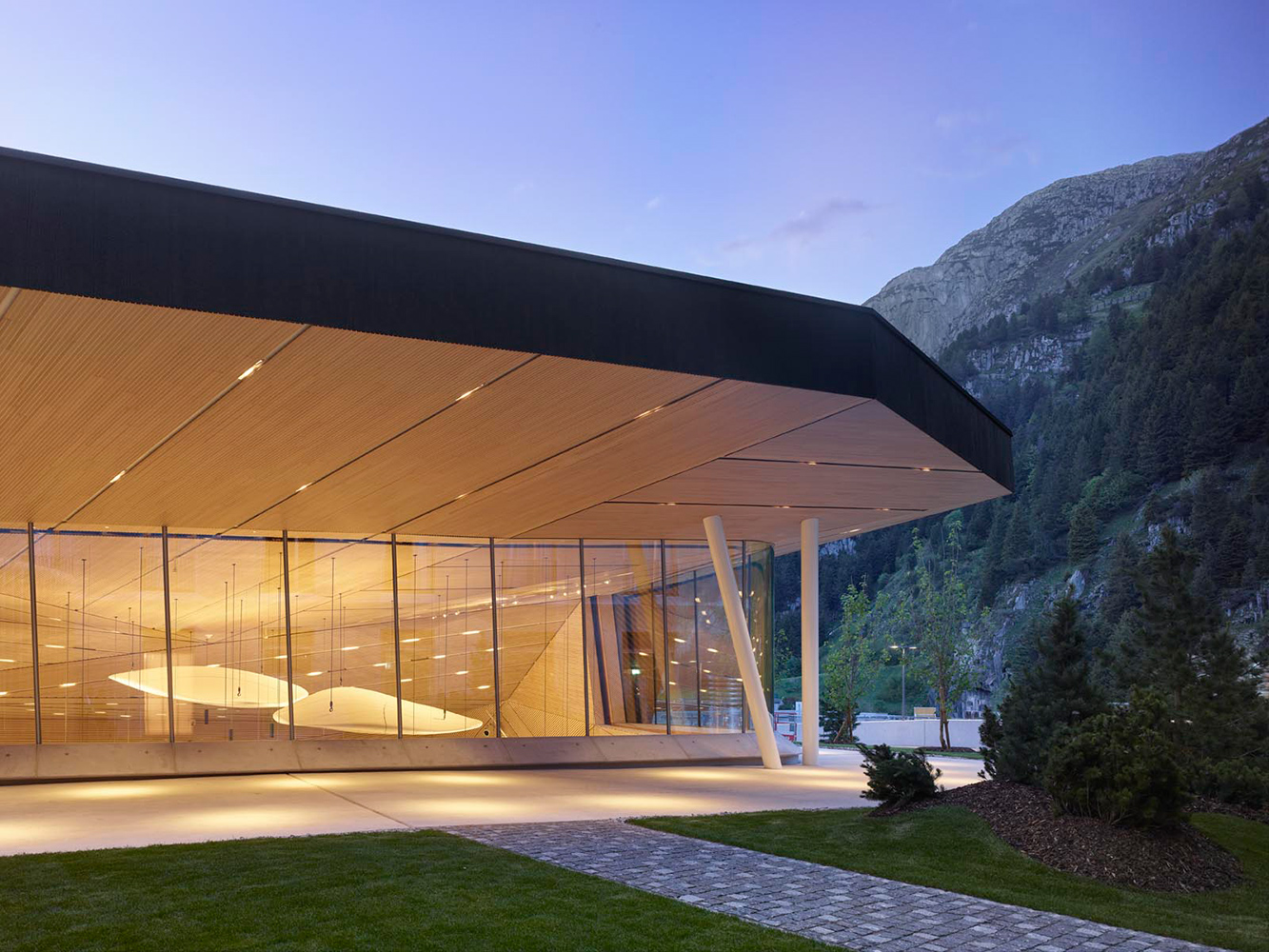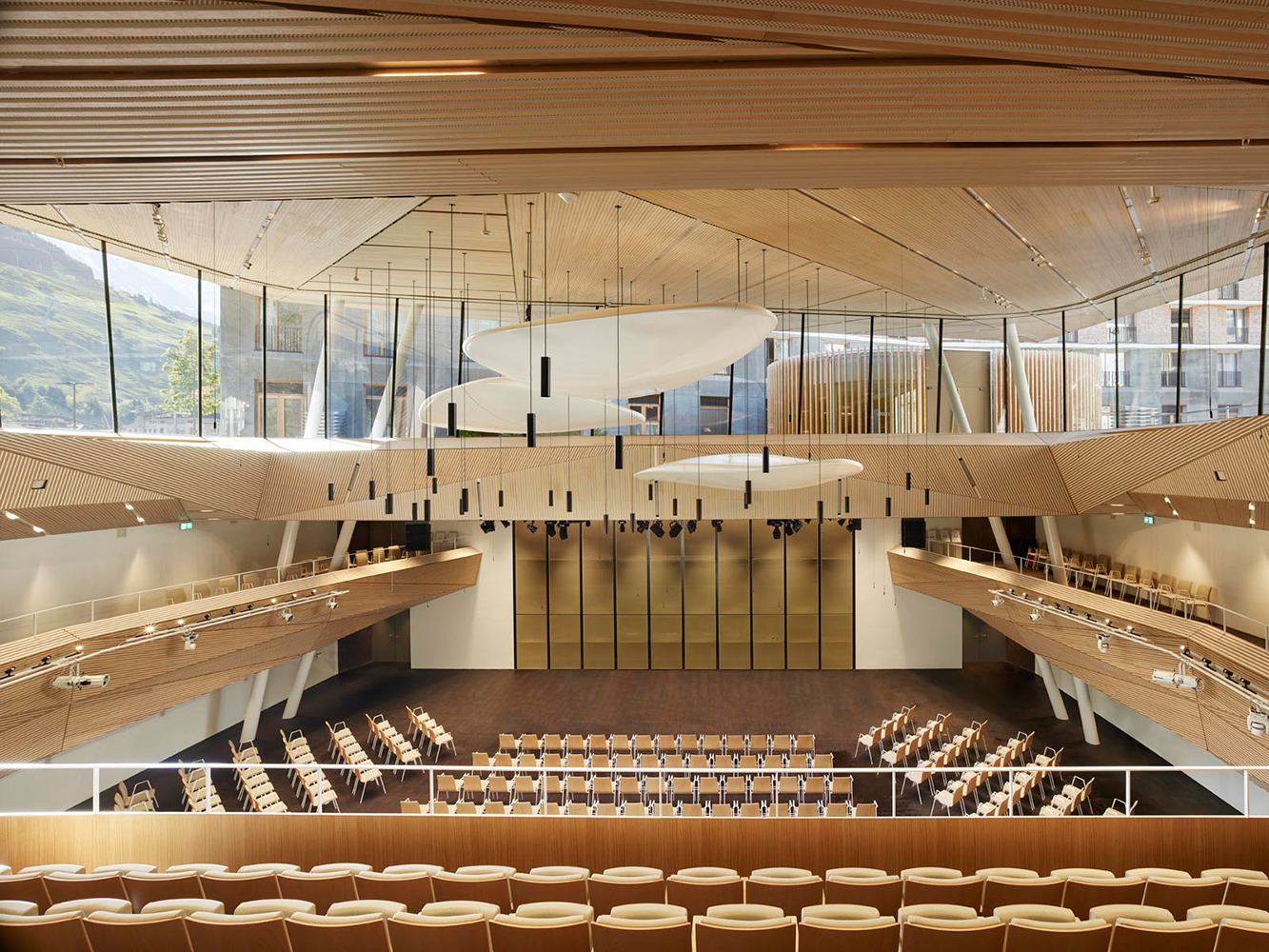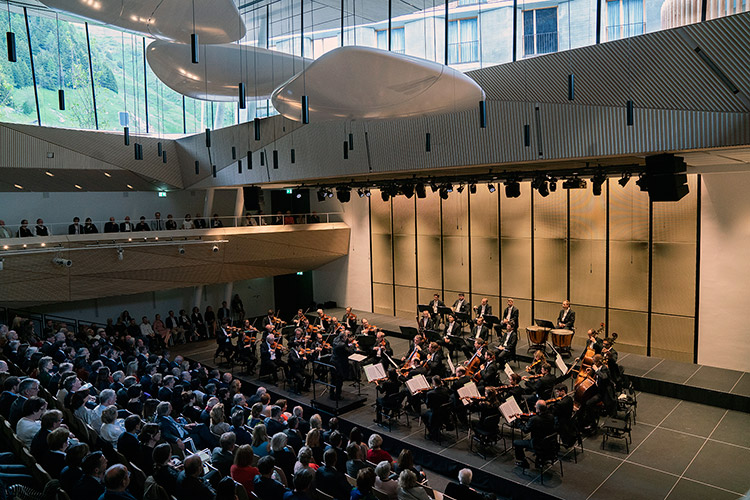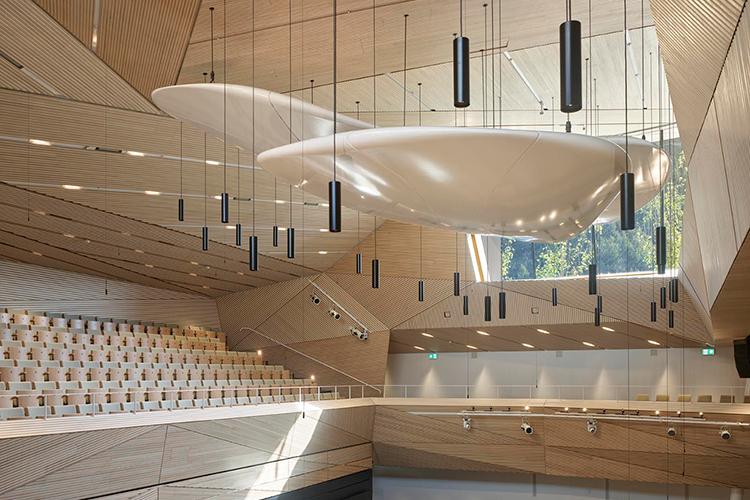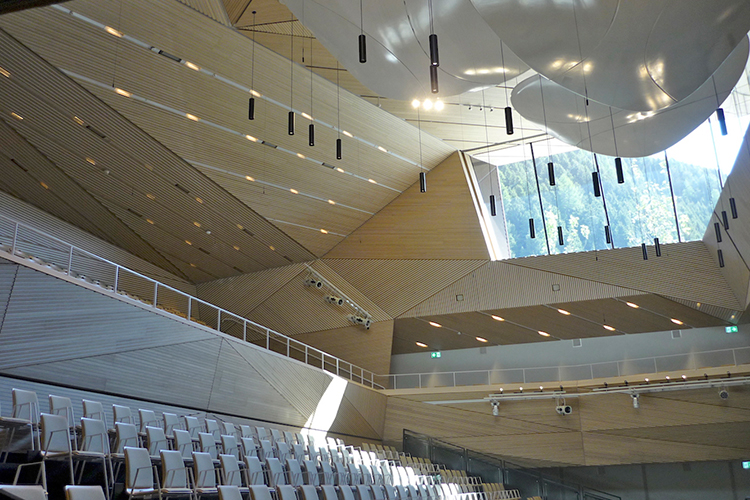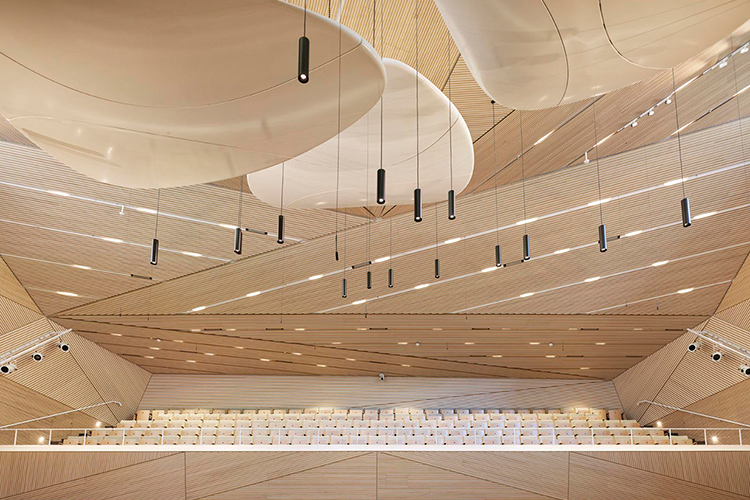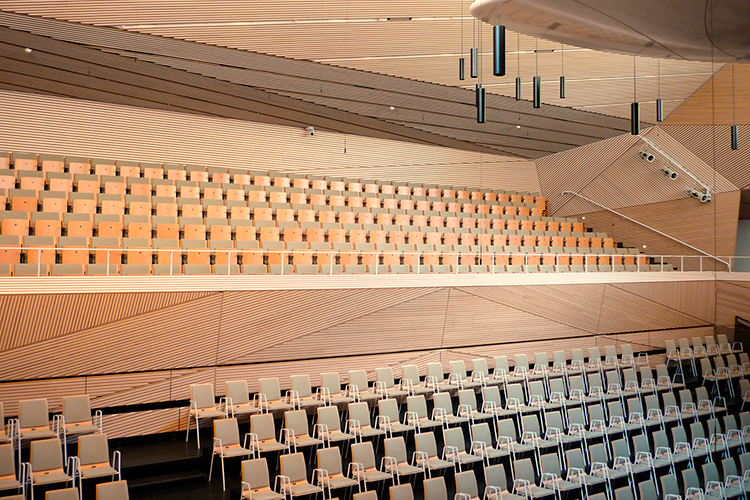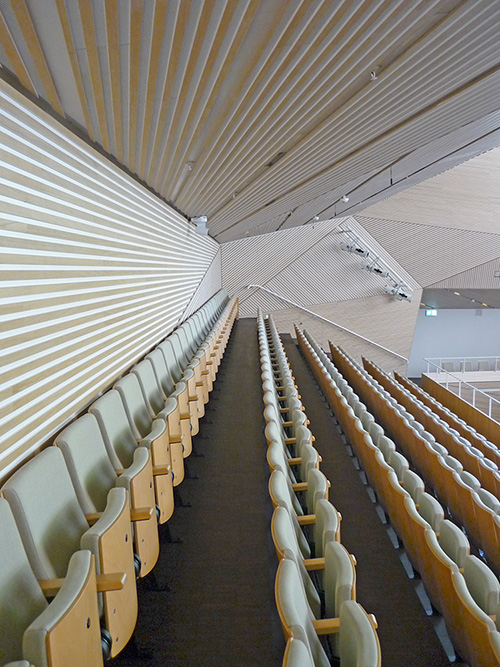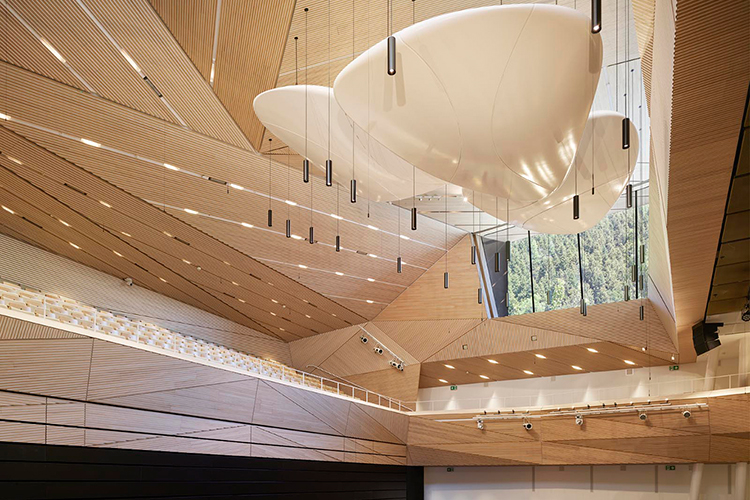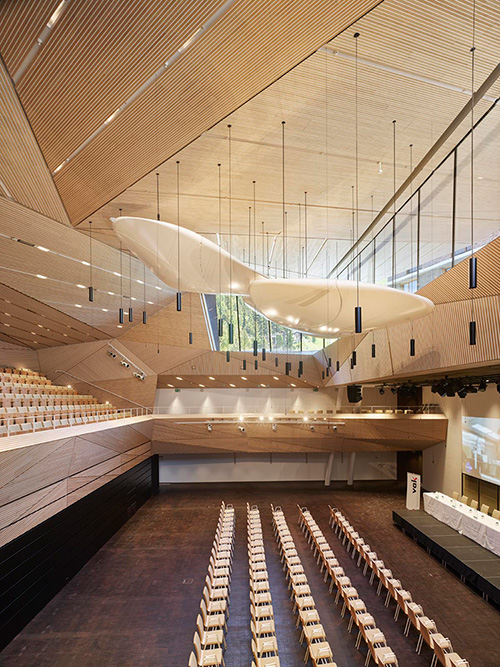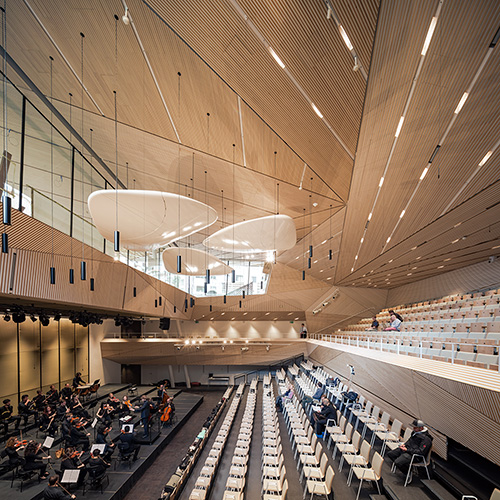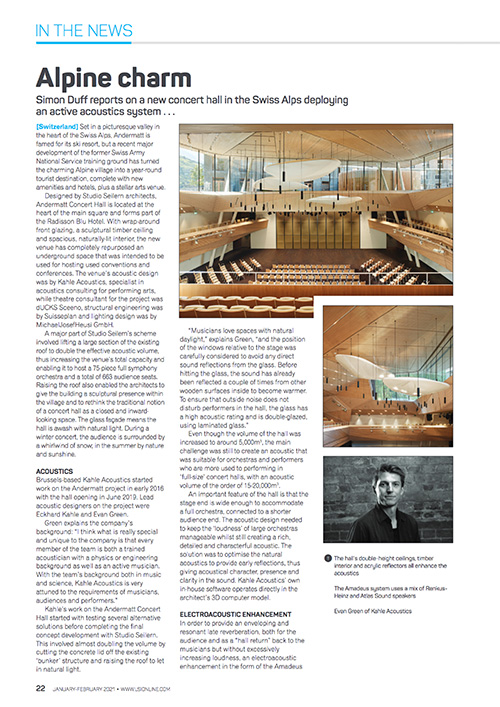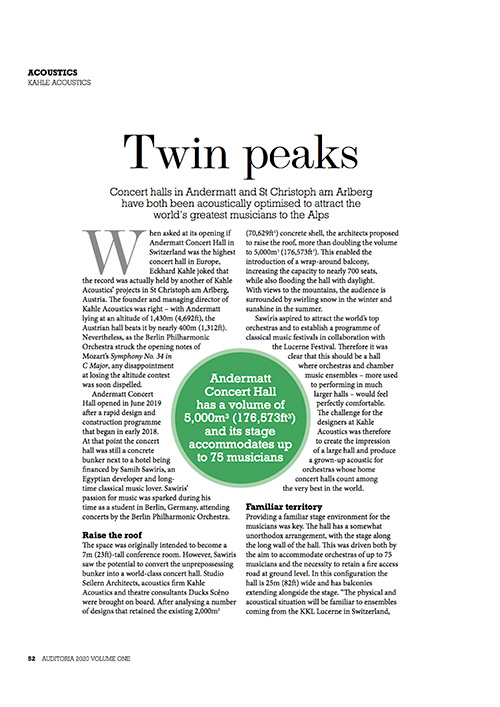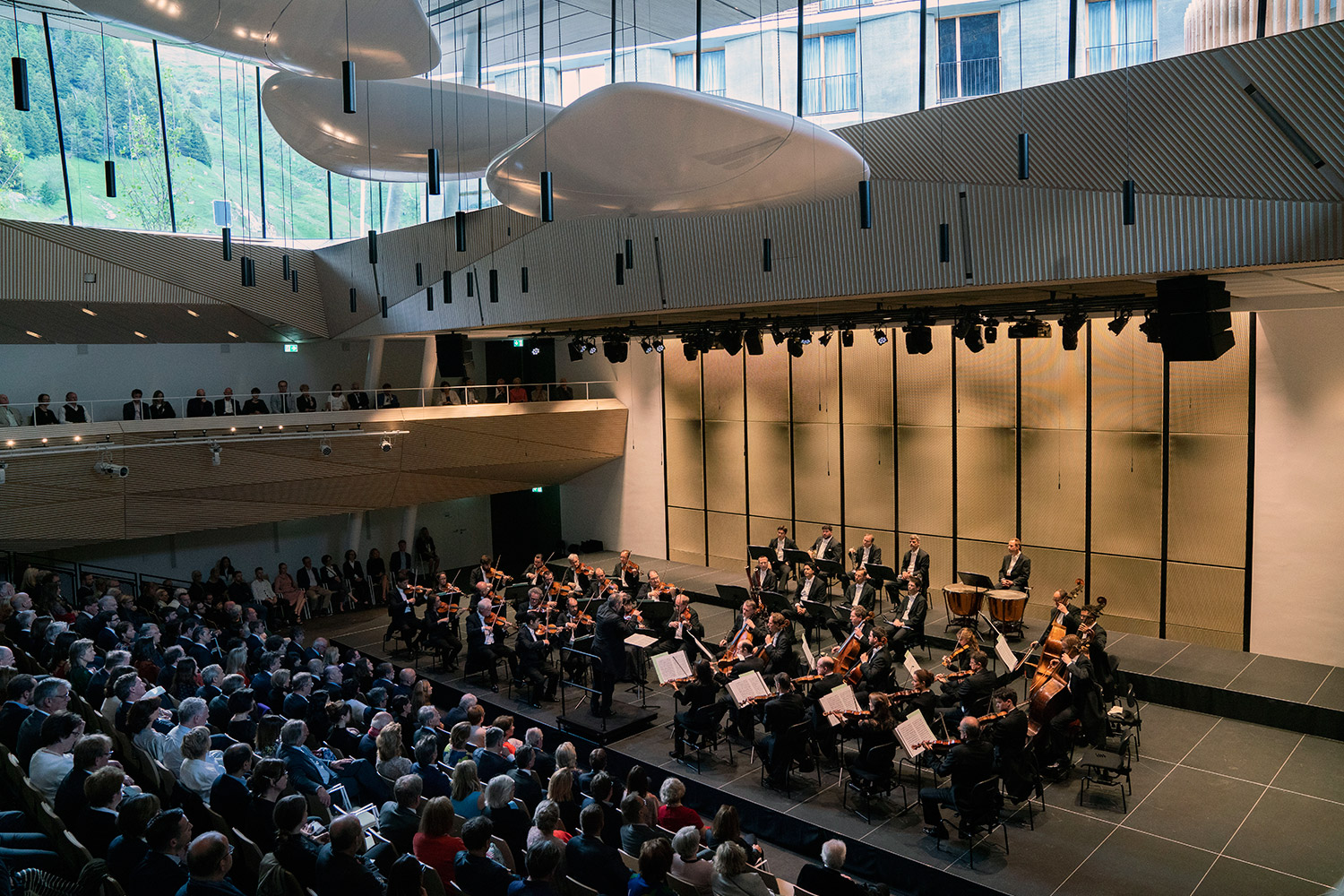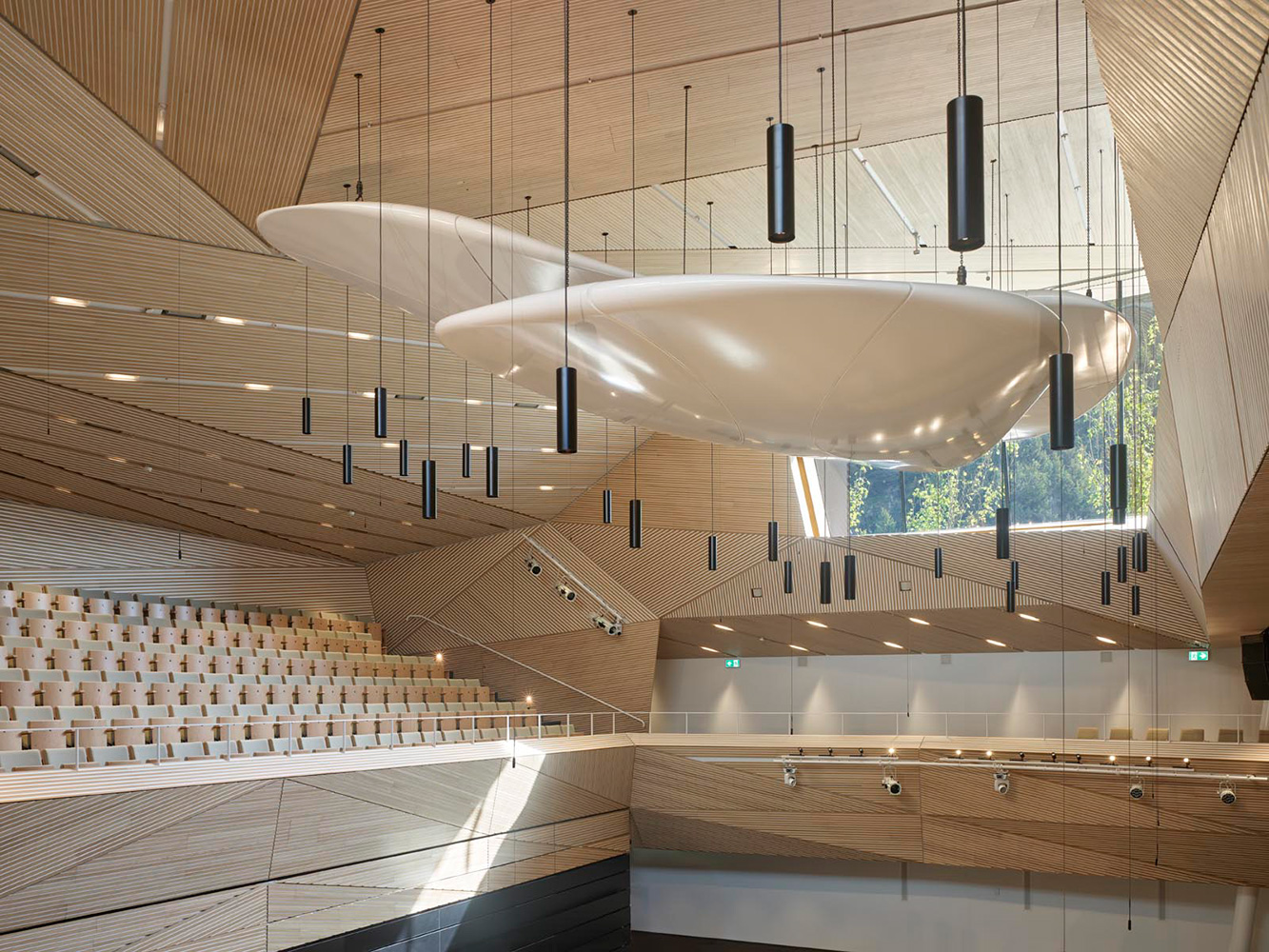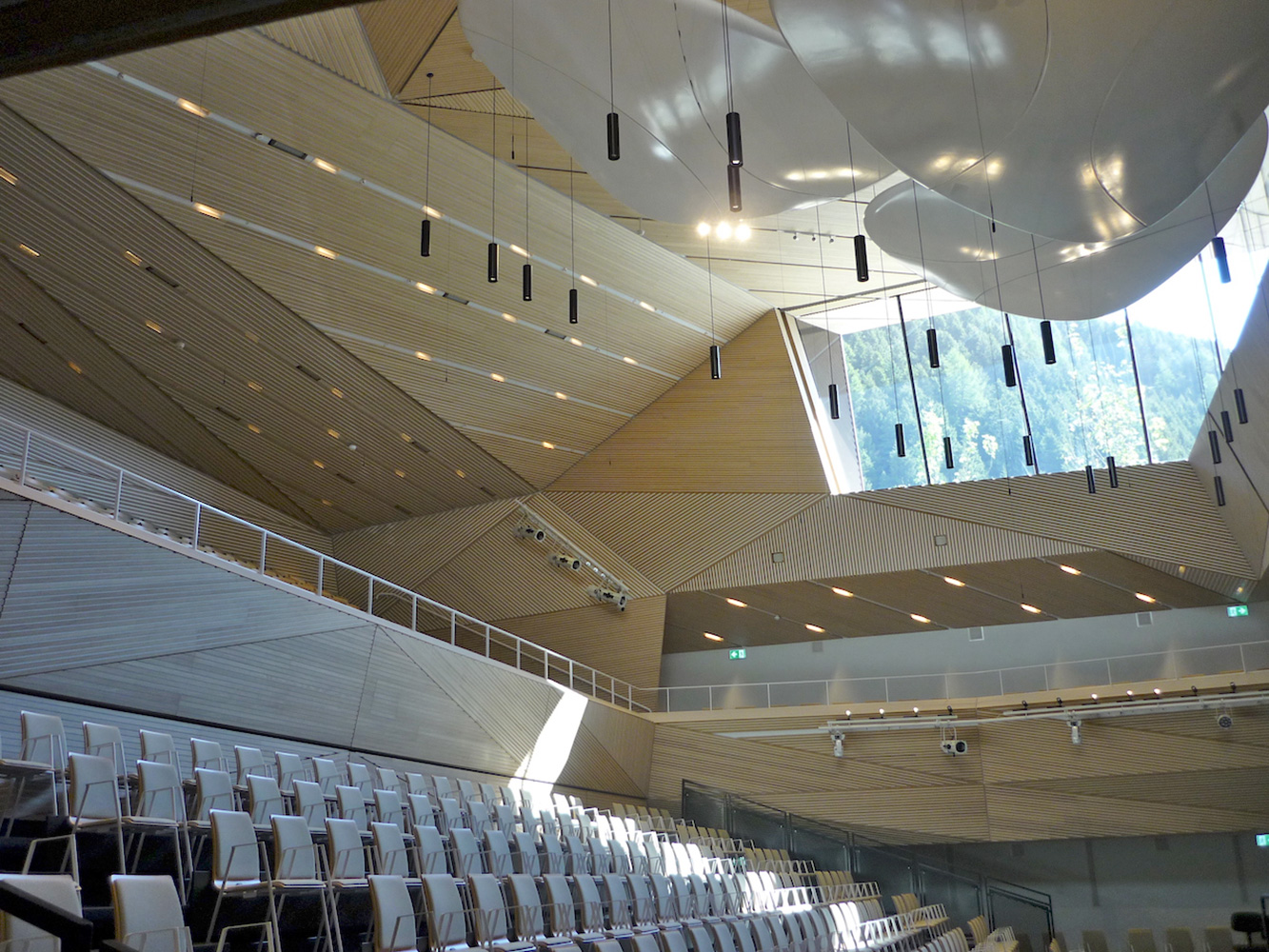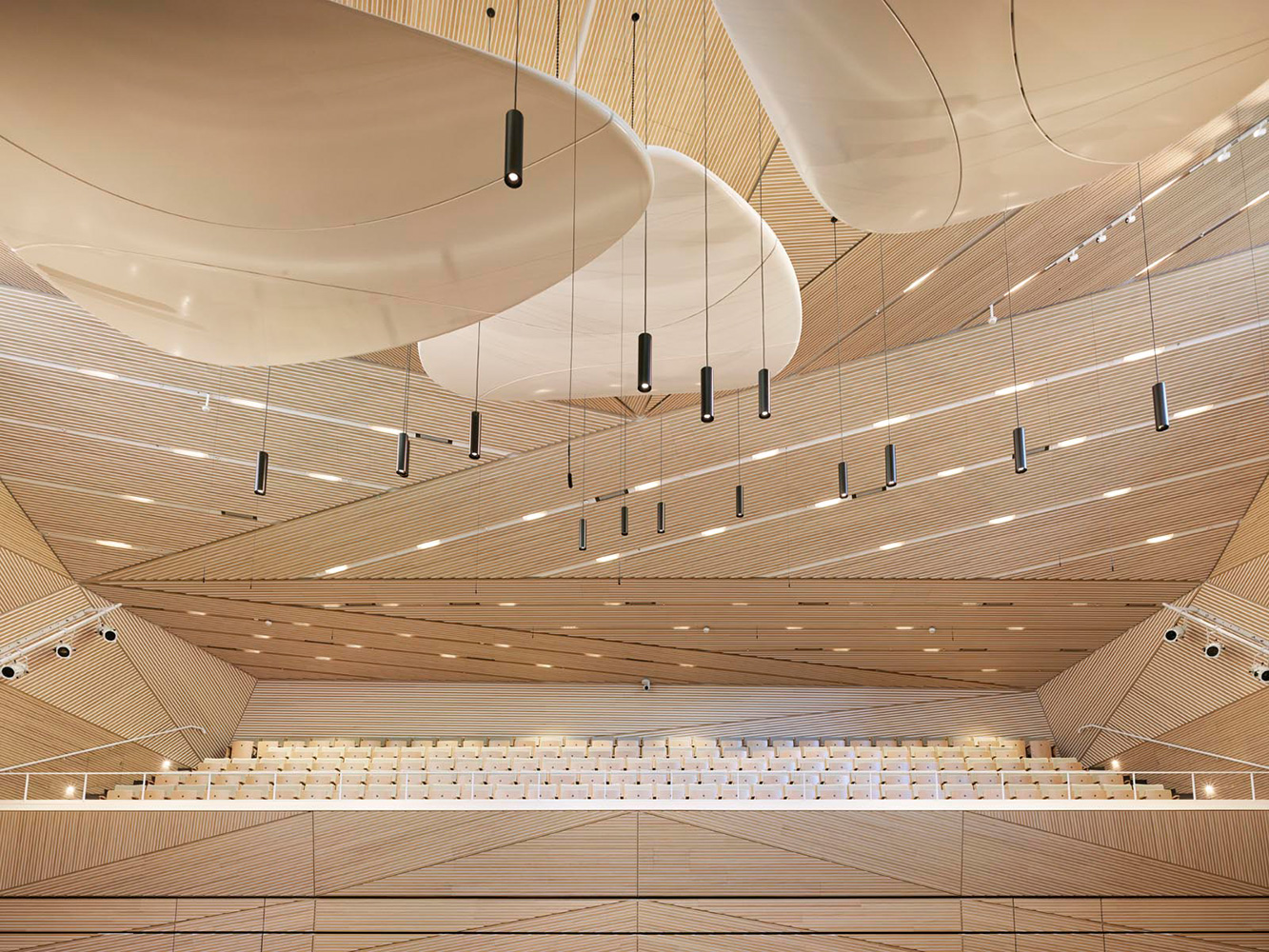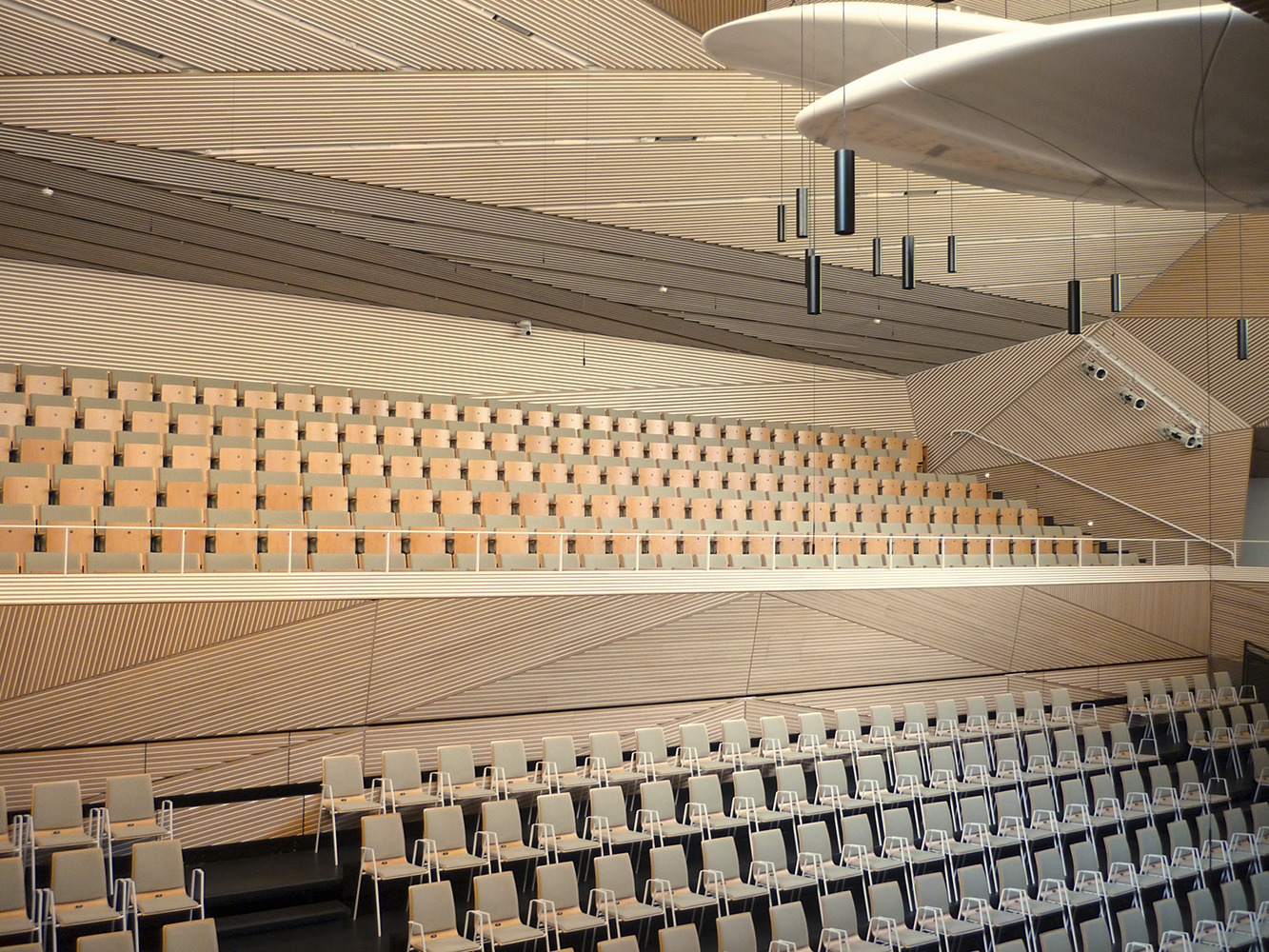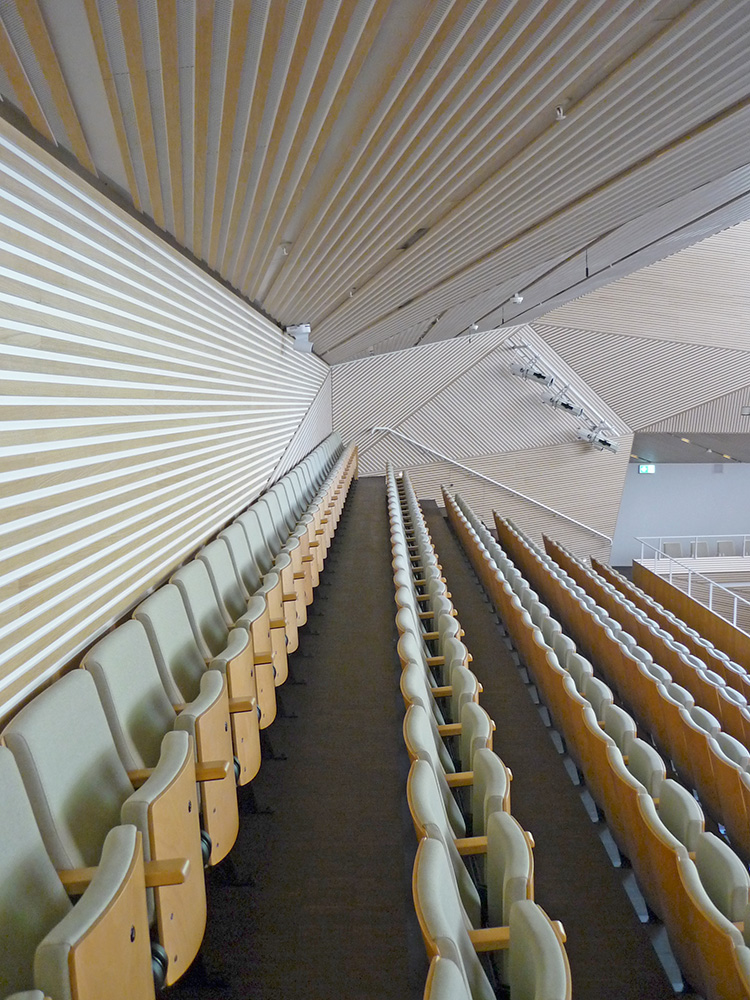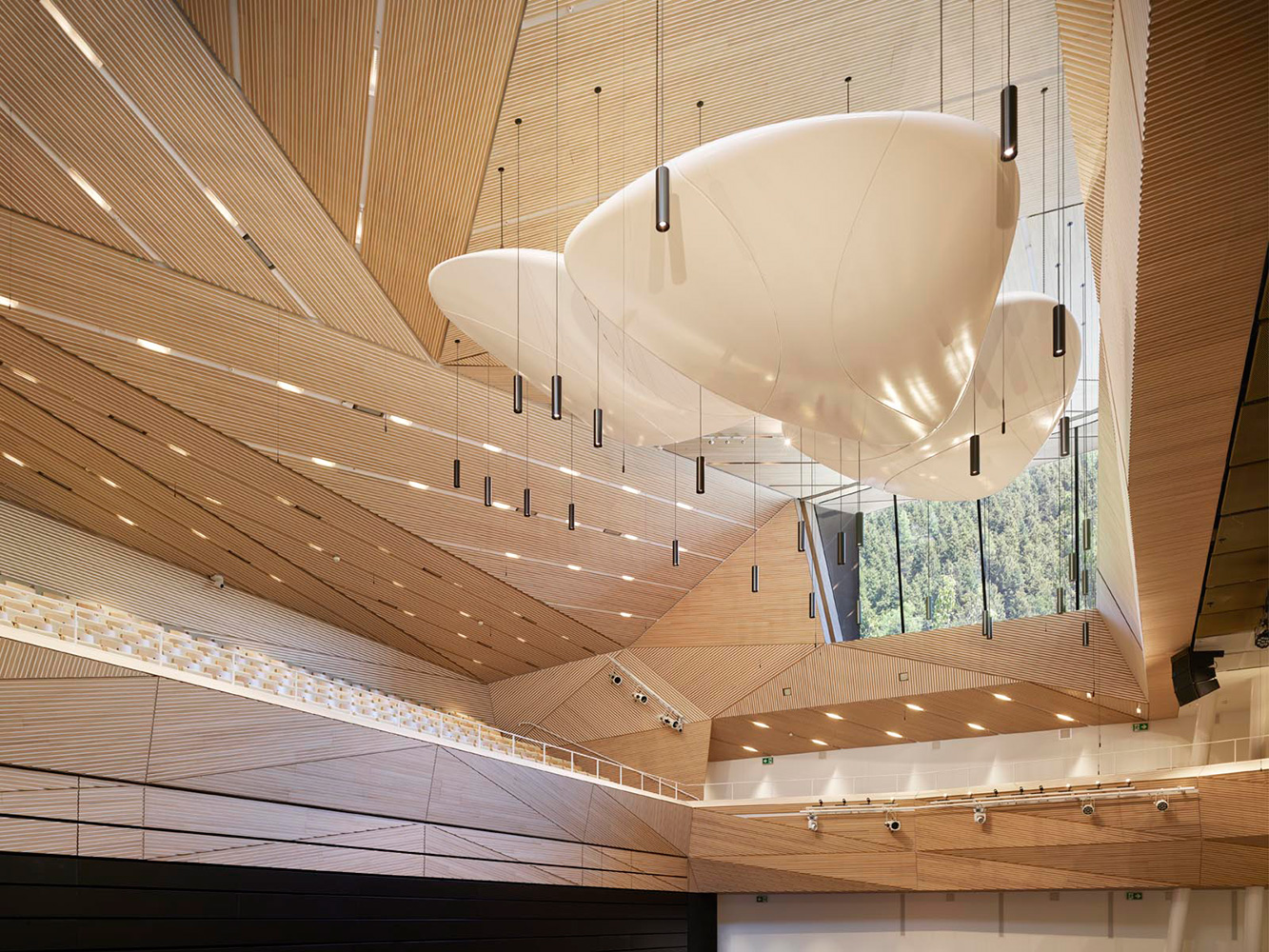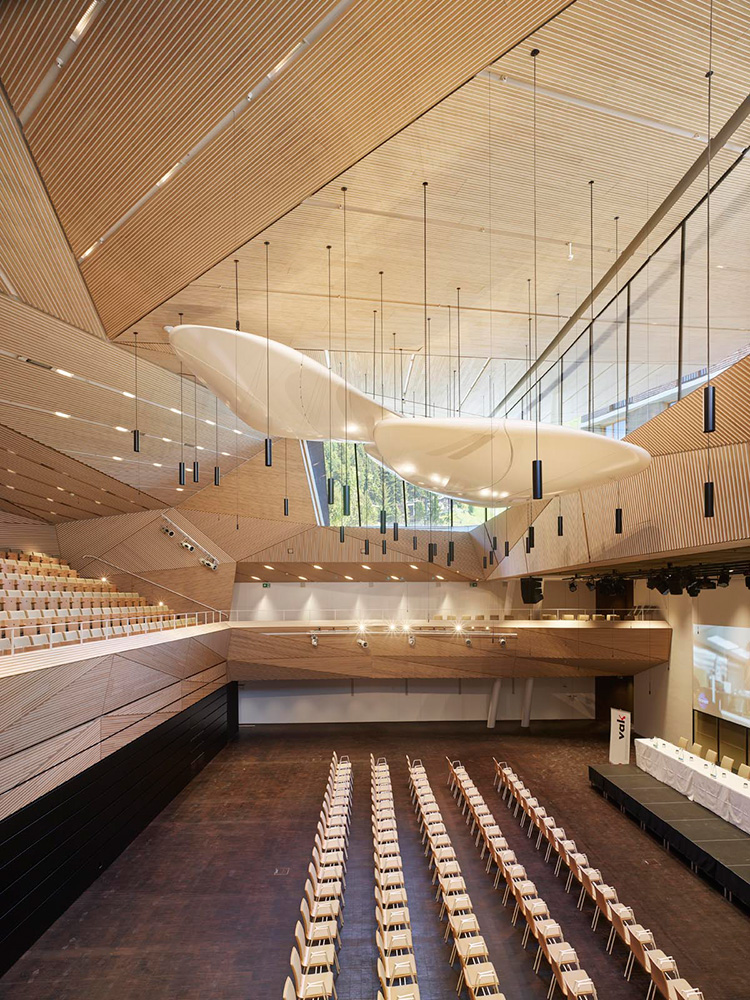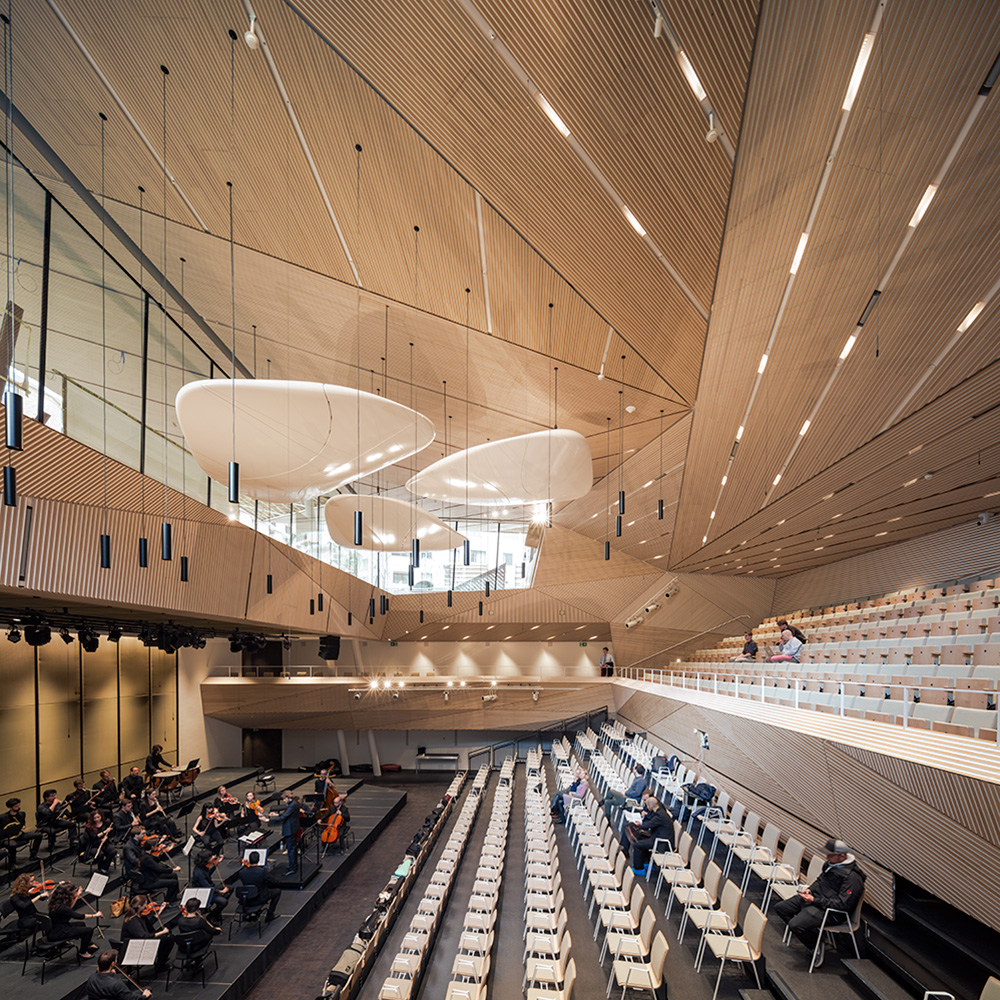Andermatt Concert Hall
A world-class concert hall at 1 400 m above sea level: the Andermatt Concert Hall is at the heart of the redevelopment of Andermatt into one of Switzerland's largest resorts. Every facet of the origami-inspired interior of this flexible, 650-seat venue has been acoustically optimised; furthermore, an electronic reverberation system discreetly lengthens the reverberation to adapt the acoustics for different music styles, ensembles and sizes of audience.
Information Sheet
New Build Andermatt Concert Hall www.andermatt-swissalps.ch
Location Andermatt, Switzerland.
Project Cost 16 million CHF (approx. 14 million € according to the opening year's conversion rate).
Time Frame Design: 2017-2018. Construction: 2017-2019. Opening: June 2019.
Owner Andermatt Swiss Alps & BESIX, Switzerland.
Architect(s) Studio Seilern Architects, UK www.studioseilern.com
Theatre Planner(s) dUCKS Scéno, France www.ducks.fr
Seat Count Concert hall with flexible seating between 500 and 650 seats. Total gross area: 2 072 m².
Uses The concert hall is primarily intended for classical music and music festivals. The flexible staging can accommodate solo recitals, small ensembles as well as large orchestras (up to 75 musicians, opening concert with the Berliner Philharmoniker). Other uses include conferences, banquets and amplified concerts.
Services Full-service acoustics consulting for the concert hall and ancillary spaces, including room acoustics design, acoustical shaping and optimisation of the concert hall, tuning of the acoustics for opening, sound isolation design and services noise control.
Team Evan Green, Eckhard Kahle, Kahle Acoustics.
